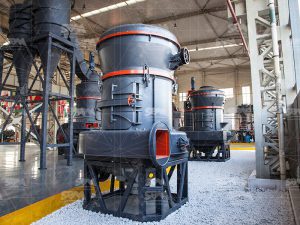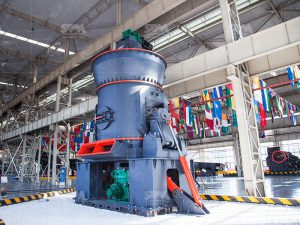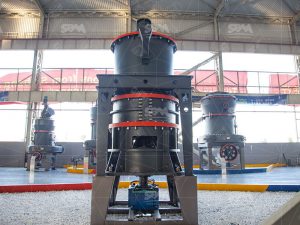Kaolin clay, also known as China clay, is a naturally occurring soft, white clay mineral composed primarily of the mineral kaolinite. It is widely used in various industries due to its unique physical and chemical properties, such as high whiteness, fine particle size, and chemical inertness. Kaolin clay is often used as a filler, extender, or pigment in industries such as paper, ceramics, rubber, plastics, paints, and cosmetics. Its excellent plasticity and capacity to retain shape after forming make it an essential material in manufacturing processes requiring high-temperature stability.
Before being used in these applications, kaolin clay must undergo grinding to reduce its particle size and enhance its properties. The grinding process transforms the raw kaolin into fine powders with specific particle sizes, typically ranging from 325 mesh to 3000 mesh, depending on the requirements of the application. The finer the kaolin powder, the more valuable it is for high-performance products like paper coatings, ceramic glazes, and rubber compounds.
Kaolin clay powder is used across various industries due to its versatile properties. Here are some of the major applications:
One of the primary uses of kaolin clay powder is in the paper industry, where it serves as a coating and filler material. When used as a coating, kaolin enhances the smoothness, gloss, and printability of the paper. It also improves opacity and brightness, resulting in high-quality printed materials. As a filler, kaolin reduces the amount of expensive pulp required, making the paper production process more cost-effective.
In the ceramics industry, kaolin is a critical raw material used in the production of porcelain and fine china. The fine particle size of kaolin clay powder gives ceramic products a smooth texture and enhances their strength. Additionally, kaolin’s ability to withstand high temperatures makes it ideal for use in firing processes.
Kaolin clay powder is widely used as a pigment and extender in paints and coatings. Its fine particle size allows for easy dispersion, improving the texture and application of the paint. Kaolin’s chemical inertness ensures that it does not react with other components in the paint, maintaining its stability and improving the durability of the final product.
In the rubber and plastics industries, kaolin clay powder is used as a reinforcing agent. It improves the mechanical strength, elasticity, and durability of rubber products. In plastics, kaolin acts as a filler, enhancing the material’s rigidity and reducing production costs.
Kaolin clay powder is also a popular ingredient in the cosmetics industry, where it is used in facial masks, foundations, and powders. Its absorbent properties help control oil, reduce shine, and improve the texture of cosmetic products. Additionally, kaolin is non-toxic and gentle on the skin, making it suitable for use in skincare formulations.
Kaolin clay powder is used in some pharmaceutical applications, especially as a base for medicines like anti-diarrheal drugs. It has been known to provide gastrointestinal benefits due to its ability to absorb toxins and reduce irritation.
The kaolin clay powder grinding process is a crucial step in the production of fine powders used in various industries. This process involves a series of operations, from crushing the raw material to refining the powder to achieve the desired particle size. Below is a detailed description of the kaolin clay powder grinding process.
1. Raw Material Preparation: The first step in the kaolin grinding process is the extraction of kaolin from deposits. Kaolin is typically found in large blocks, which are transported to the processing plant. The raw kaolin must be crushed into smaller pieces before further processing. Crushing is performed using jaw crushers, impact crushers, or hammer mills. This initial crushing step reduces the size of the kaolin to make it suitable for grinding.
2. Primary Grinding: Once the raw kaolin is crushed, it is fed into a grinding mill for primary grinding. Mills such as the MTW European Trapezium Mill or LM Vertical Mill are ideal for this stage. These mills are capable of grinding kaolin to fine sizes in a controlled and energy-efficient manner. Vertical mills, in particular, are equipped to handle the drying, grinding, and conveying of materials in a single process, which enhances the efficiency of kaolin powder production.
3. Fine Grinding: After the initial grinding, the material undergoes further fine grinding to achieve the desired particle size. This is typically accomplished using specialized grinding machines such as the SCM Ultrafine Mill or LUM Ultrafine Vertical Mill. These mills can grind kaolin to ultrafine powders with particle sizes as small as 3250 mesh. The ultrafine grinding process ensures that the kaolin powder is smooth, homogeneous, and free of impurities, making it suitable for high-performance applications such as paper coatings and ceramics.
4. Classification and Screening: Following fine grinding, the kaolin powder must be classified to ensure that it meets the required particle size distribution. Air classifiers or sieving machines are used to separate the kaolin into different size fractions. This classification process ensures that the kaolin powder is of consistent quality and meets the specifications for its intended application.
5. Dehydration and Drying: Kaolin naturally contains a significant amount of moisture, which must be removed during the grinding process. Vertical mills and ultrafine mills typically incorporate drying mechanisms to remove excess moisture as the material is ground. This drying step ensures that the kaolin powder is free-flowing and suitable for further processing or packaging.
6. Surface Modification: In some cases, kaolin powder undergoes surface modification treatments to improve its performance in specific applications. For example, kaolin used in the paper industry may be treated with chemicals to enhance its opacity or brightness. Surface modification can also improve the dispersibility of the kaolin powder in paints, coatings, and plastics.
7. Powder Collection and Packaging: Once the kaolin powder has been ground and classified, it is collected using dust collectors or bag filters. The powder is then transferred to storage silos or directly packaged for shipment. Kaolin powder is typically packed in bags or bulk containers, depending on customer requirements and the intended application.
8. Quality Control: Throughout the grinding process, strict quality control measures are implemented to ensure that the kaolin powder meets the required specifications. Parameters such as particle size distribution, moisture content, brightness, and chemical composition are monitored at various stages of the production process. Laboratory testing and analysis are carried out to verify the quality and consistency of the final product.
The kaolin clay powder grinding process is essential in transforming raw kaolin into a high-performance product that can be used across various industries. From its application in the paper and ceramics industries to its use in paints, plastics, and cosmetics, finely ground kaolin enhances the properties and performance of end products. The grinding process, which includes crushing, fine grinding, classification, and drying, ensures that kaolin clay is prepared to meet the specific needs of each application. The use of advanced grinding technologies, such as vertical mills and ultrafine mills, further enhances the efficiency and quality of the kaolin powder production process.

MTW European Grinding Mill is innovatively designed through deep research on grinding mills and development experience. It absorbs the latest European powder grinding technology and concept, and combines the suggestions of 9158 customers on grinding mills. This grinding mill perfectly satisfies the production demands of the customers on 200-33μm (80-425Mesh) fine powder.

Based on the absorption of advanced technologies of famous international corporations and 30 years’ experience in grinding mill production, SBM has launched the LM Vertical Grinding Mill which integrates five functions of crushing, grinding, powder selection, drying and material conveying. It is characterized by centralized technological process, small occupational area, low investment, high efficiency, energy conservation and environment protection.

SCM Ultrafine Grinding Mill is a new superfine powder (325-2500 mesh) production equipment developed through accumulating years of experience in grinding mill production, absorbing Swedish advanced machine manufacturing technology, and undergoing many years of tests and improvements. The SCM Ultrafine Grinding Mill is the result of combination of advanced Chinese and Swedish technologies. Meanwhile, it symbolizes the new development and new science in the grinding world.